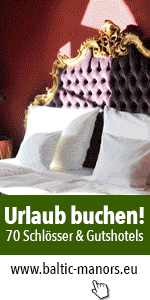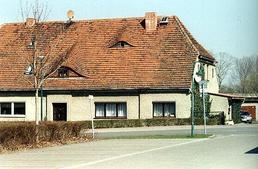Lübzer Bauhof
Lübzer Bauhof was first mentioned as a demesne in 1700 with the farmers of the village of Lutheran being obliged to compulsory services there. These services were released around 1790, the tenants from then on were Langfeld, Frick, Busch, and finally Rudolph Berndes who gave up the tenancy in 1868 when the estate was assigned as hereditary lease. He then became tenant in Kritzow.
Gustav Wachenhusen became leaseholder, from around 1891 on Otto Bobsin, after 1930 Friedrich Saebler. In 1882 as well as in 1937 the estate comprised 232 hectare, there was one further leaseholder, and four farmers. In 1894 a brick yard had been added, also a steam saw mill which soon disappeared again. In 1913 there were two more leaseholders and ten farmers, 1923 five farmers and one innkeeper. Around 1910 the estate was relocated from Lübz to Riederfelde which is situated east of Lübz without any alterations as far as stock and ownership was concerned. From then on it was called Bauhof Riederfelde.
A Bauhof was a manorial building yard, a storage place for materials repeatedly needed which at the same time was a small farm belonging to a large-scale agricultural unit. The owner of several estates, in this case the demesne administration (Dominialamt), often possessed their own building- and material yard.
Next to the bridge across the river Elde in Lübz the tenant´s house and farm buildings remained. The last barn was burned down in the 1960ties, the vastly modernized house is still there. During GDR times the farming estate in Riederfelde became a livestock mast system, nowadays it is the Reiterhof Boschatzke (riding stables). The buildings seem to be of a more recent date. During the early middle ages a village called Restorf lay behind the property, however the village soon disappeared again. The founders of this village were the von Restorffs (Redickesdorpe) who were the owners of extensive properties in this area and had their castle in Kritzow.


